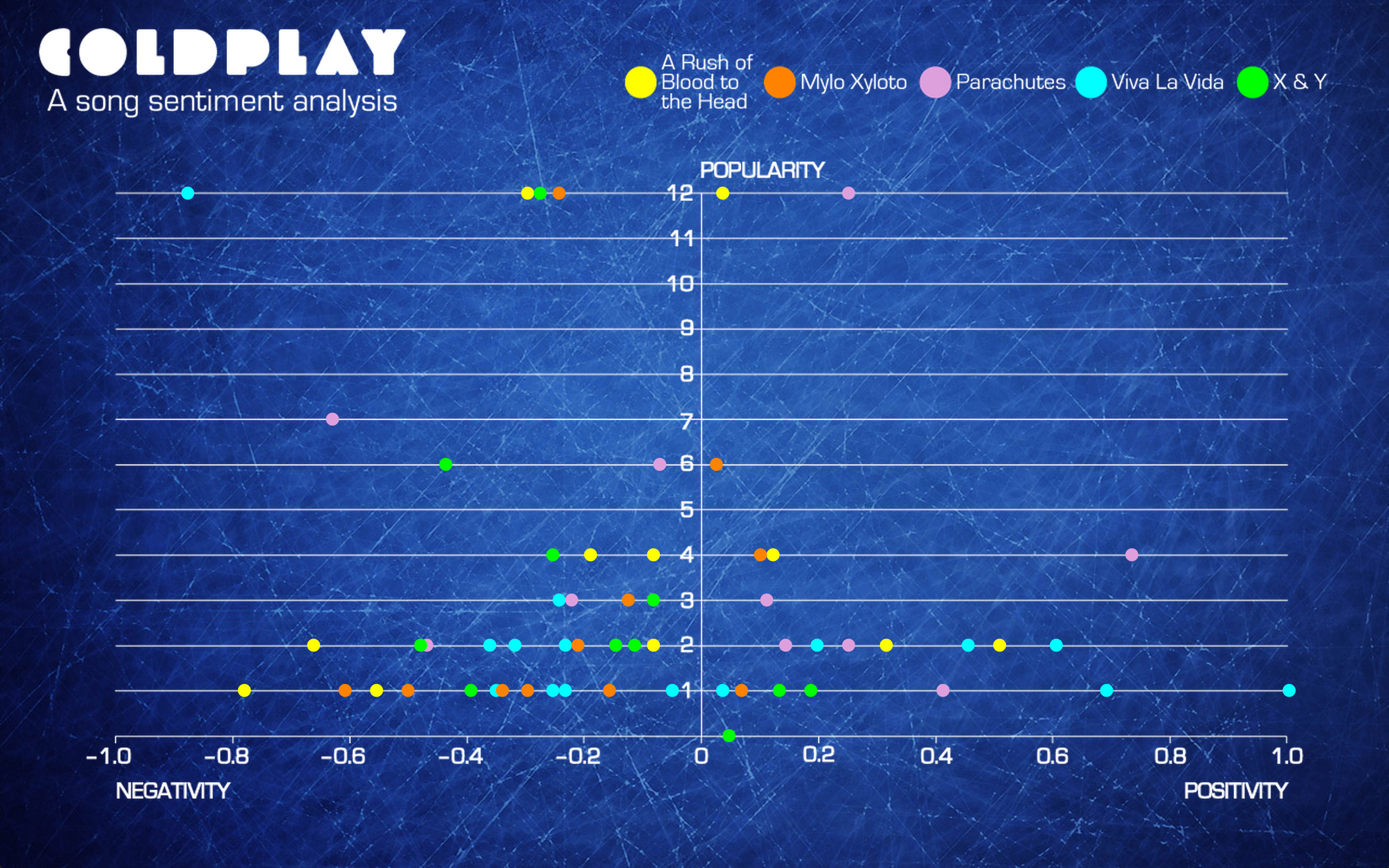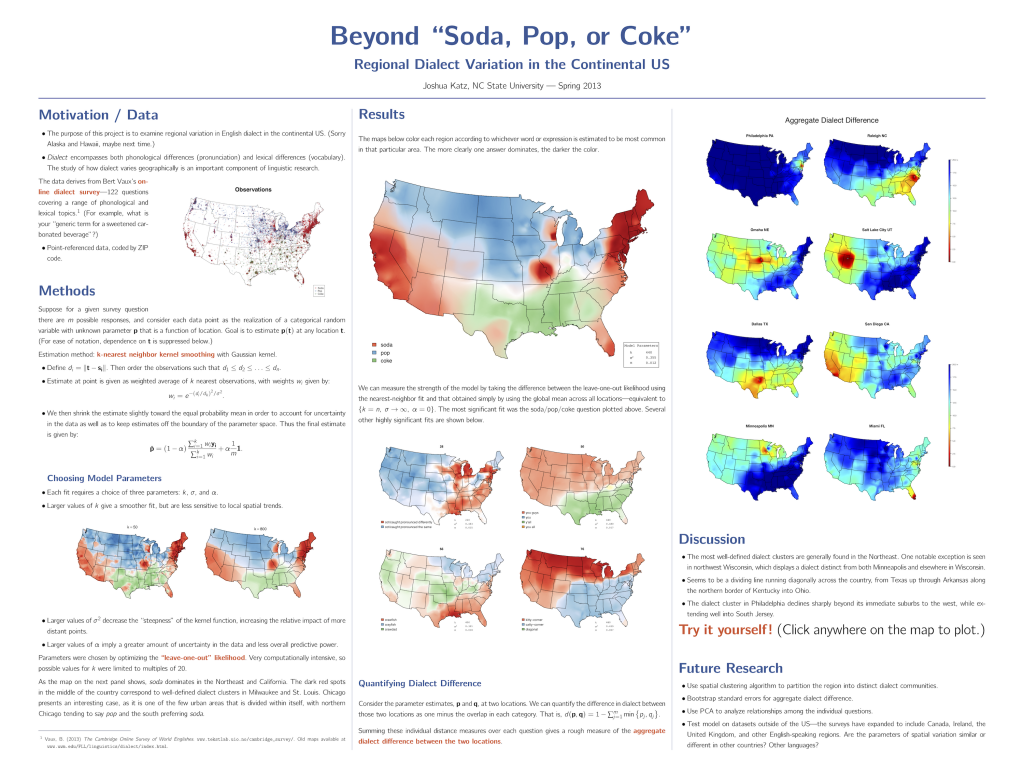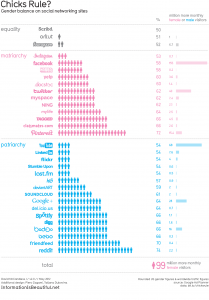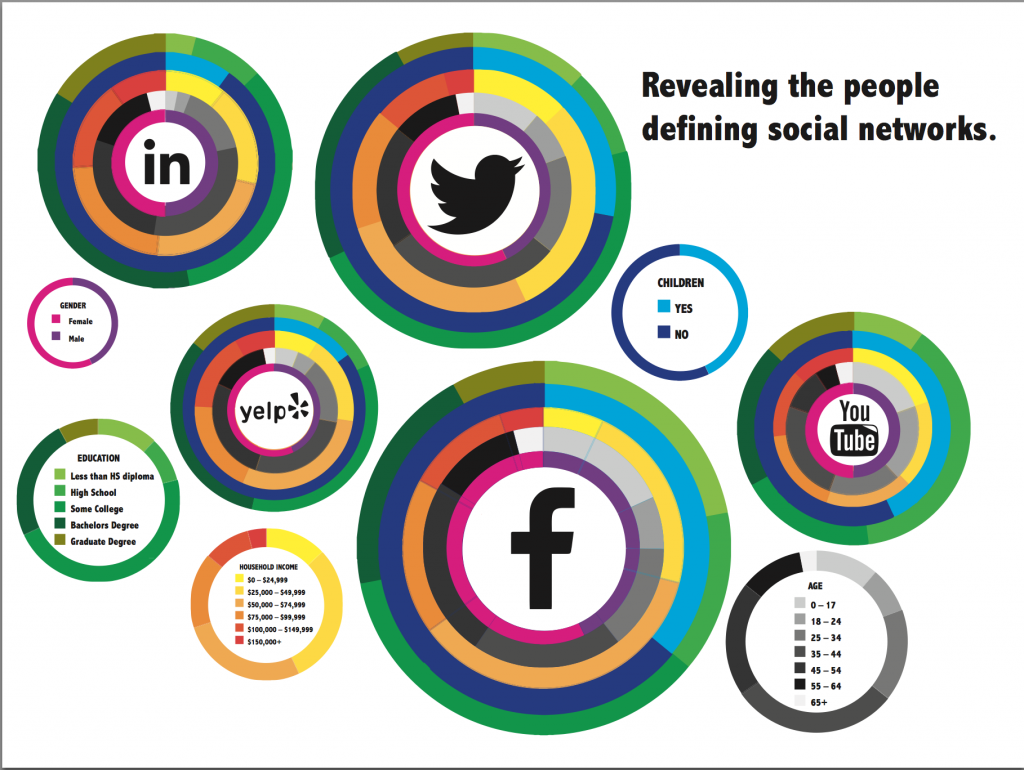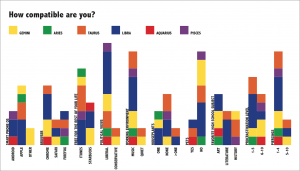Screenshot of my final project
All posts by Vanshika
Interaction assignment_revised proposal
Interactive assignment proposal
Realtime Assignment_Proposal
- The subject of your web page.
My web page will be about weather. It will inform the viewers the weather of different cities around the world as well as give an approximate idea of the weather at first glance.
- The data you will use
Weather Underground:
http://www.wunderground.com/weather/api/d/docs?d=data/conditions&MR=1 - A design comp of your visualization.
Design comp - Idea
My visualization will be a world map that will be made up of circles/dots that represent the states around the world. Through the API I have access to the longitude and latitudes of each state, and the size of the circle/dot will be based relatively on the size of the state. I will categorize temperatures in ranges, and each range will be represented by a color. Hence at first glance, the viewer can examine the similarities of temperature around the world (something like a heat map). When the viewer clicks on the dot, exact information of that state will be shown, which will include the state name, country, exact temperature at that time, and temperature range.
Little Big Data Assignment
Title: Everything you need to know about Dexter!
Topic: Dexter (aired on showtime).
Dexter is a serial killer, but also a blood spatter analyst at Miami Metro Homicide. Hence, I portrayed my data through blood spatters.
Each blood spatter represents an episode. There are 8 seasons with 12 episodes each. The x-axis of the blood spatter represents the order of the episodes, the y-axis represents the user ratings on a scale of 1-10, and the size of the spatter represents the number of victims in each episode.
In the show, dexter analyses blood spatter through thread work which helps him get closer to how the murder took place. Hence, all the victims are connected to Dexter. Also, some characters of the show played important roles in specific seasons. Those characters are connected to the respective season as well.
Each season has one major antagonist on whom the story revolves, so to depict them I illustrated icons that represent each season. Lastly, I also included each episode name, as they have symbolic importance to each season.
The presentation of my data is inspired by Dexter’s ‘kill room,’ and so exists three-dimensionally.
RESEARCH ASSIGNMENT_PART 2
Presentation Topic: Dialect Survey Maps (A visualization)
These dialect maps were made by Joshua Katz based on data from the Harvard Dialect Survey and were conducted by Bert Vaux and Scott Golder.
They examined regional dialect variation in the United States. Each observation can be thought of as a realization of a categorical random variable with a particular parameter vector that is a function of location—their goal was to interpolate among these points in order to estimate these parameter vectors at a given location, making use of a combination of kernel density estimation and non-parametric smoothing techniques. Results in a smooth field of parameter estimates over the prediction region. Using these results, a method for mapping aggregate dialect distance was developed.
Video of people taking the survey
What does the way you speak say about where you’re from? See your personal dialect map here
Little Big Data_Proposal
- The subject of my poster:
I am a big fan of the TV show Dexter that aired on Showtime. I wanted the subject of my poster to relate to Dexter, and make my visualization a sort of collectible for Dexter fans. The purpose of the poster will be to inform viewers, showing them different data in categories about the show over their 8 seasons (96 episodes).
I will be showing:
The name of each episode
Air date of each episode
Names of victims per episode
Names of major victims per season
Viewer ratings per episode
Main Cast per season/episode
Writers per episode
Directors per episode
- The data I will use:
I will be using pre existing data from different sources. The links to which are as follows:
The name of each episode
Air date
Names of victims per episode
Names of major victims per season
Viewer ratings per episode
Main Cast per season/episode
Writers per episode
Directors per episode
- The tools I will use to create the visualization:Excel – to format and accumulate data (Advanced)
Processing – to process data (Basic)
Illustrator – to design data (Advanced)
Week 2_Redesign Assignment
Link to previously existing data visualization:
Chicks Rule? (Information is beautiful)
Redesign of the above data visualization:
Preview:
PDF Document:
Vanshika_Swaika_Week2_Data Redesign
Write Up:
The data visualization I chose gives information about gender based use of social networking sites. The design makes it clear at first glance that it is gender associated but I was confused by the number of stick figures for each gender along with the bar that associated the million more users. Also, after reading the data source I realized that the visualization displays false data. Overall I felt that if this visualization illuminated some more data on specific social networks instead of just gender based use on so many networks, it would be more effective.
Hence, for my redesign I chose the most popular social networks out of the data provided, and decided to display more data about those specific networks. My aim behind my design was to not only display meaningful data but also make it visually compelling.
Week 1_Survey Assignment
Research Assignment (Part 1)
- Data Visualization Aggregator
Datavisualization.ch is the news and knowledge resource for data visualization and infographics. Their mission is to provide us with the latest research findings and most topical use cases in this field – including cognitions from self initiated studies as well as a review of outstanding projects done by smart people in the community. It is also a perfect place to share your opinion and discuss interesting movements, to get inspired and ignite new ideas.http://datavisualization.ch
- A visualization
PhD student Joshua Katz mapped vernacular across America, such as words used to address a group of people, and followed up with a dialect quiz that gave you a probability that someone in an area of the United States would understand your local tongue.
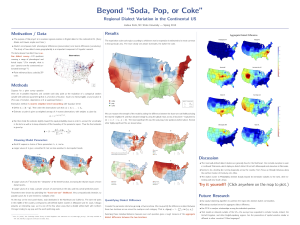
http://spark.rstudio.com/jkatz/SurveyMaps/
- Artist/Designer
http://stamen.com/datavisualizationStamen is a design and technology studio in San Fransisco that builds maps and data visualizations.
- Visualization Tool
visual.lyVisually’s mission is to help create visual content that rises above the noise. Their platform seamlessly connects designers, journalists, animators and developers with clients, featuring cloud-based collaboration tools that allow them to deliver high-quality content at unprecedented scale and speed.
- Data Collection Tool
NumbersNumbers has everything you need to organize data, perform calculations, and manage lists. And you can do it all with just a few taps on any apple device.
- Discussion Forum
http://gizmodo.com/the-best-data-visualizations-of-2013-1485611407A discussion of the best data visualizations of 2013.
- Criticism
http://www.informationisbeautiful.net/blog/A blog that discusses info graphics and data visualizations.
- Data Source:
http://www.infochimps.comInfoChimps is an organisation that has developed a data supermarket. The platform hosts over 15.000 datasets from 200 different organisations and companies. Visitors can use these datasets to combine them with their own datasets for additional insights.
- Data Ethics
Data Mining: Where Legality and Ethics Rarely Meet
http://www.ecommercetimes.com/story/52616.htmlNews of data breaches and mortgage applicants being categorized as “risky” when inaccurate credit info and commercial demographic profiles are merged has finally made consumers aware of data mining.
- A Book
Harris and co-author Sep Kamvar released We Feel Fine: An Almanac of Human Emotion, a remarkable book exploring the 12 million human emotions recorded since 2005 through brilliantly curated words and images that make this massive repository of found sentiment incredibly personal yet incredibly relatable. From despair to exhilaration, from the public to the intimate, it captures the passions and dreams of which human existence is woven through candid vignettes, intelligent infographics and scientific observations.
